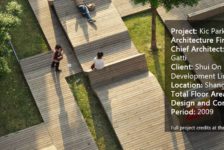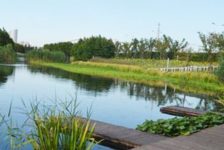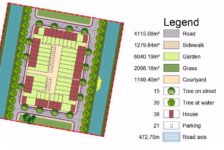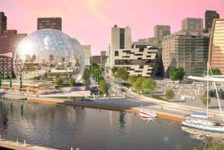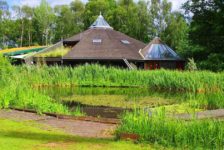Article by Elisa A.M.Varetti Mary’s Garden, Children’s Museum of Sonoma County, by BASE Landscape Architecture, Santa Rosa, California, United States of America. Being a landscape architect can be extremely funny sometimes, especially when you are asked to design a child-oriented outdoor museum. Be careful; it doesn’t mean it’ll be an easy task, not at all. There are indeed different things to take care of, as our writer Velislava Valcheva reminds us in her article, 11 Things to Remember When Designing for Children.
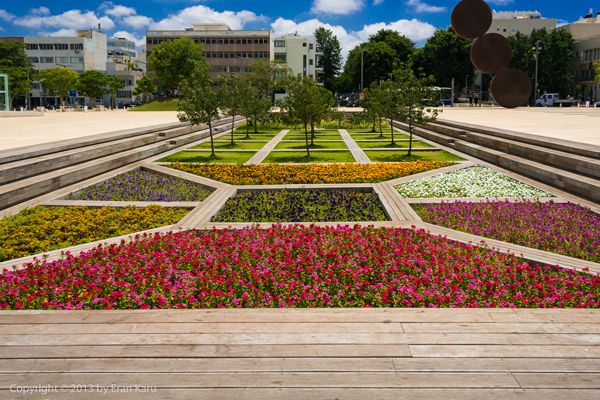
From the hit article 11 Things to Remember When Designing for Children. Sunken garden view. Photography Credits Go To Eran Karu
Children’s Museum of Sonoma County
The Children’s Museum of Sonoma County by BASE Landscape, in Santa Rosa, California, is a rare example of a child-oriented design process in which kids satisfy their thirst for knowledge by having real fun. Thanks to a grant of $1.8 million given by the state of California’s Office of Grants and Local Services, it has progressed from being a “Museum-On-The-Go” into a proper museum. Its oudoor area, titled Mary’s Garden, has been the first phase of the project to be realized.
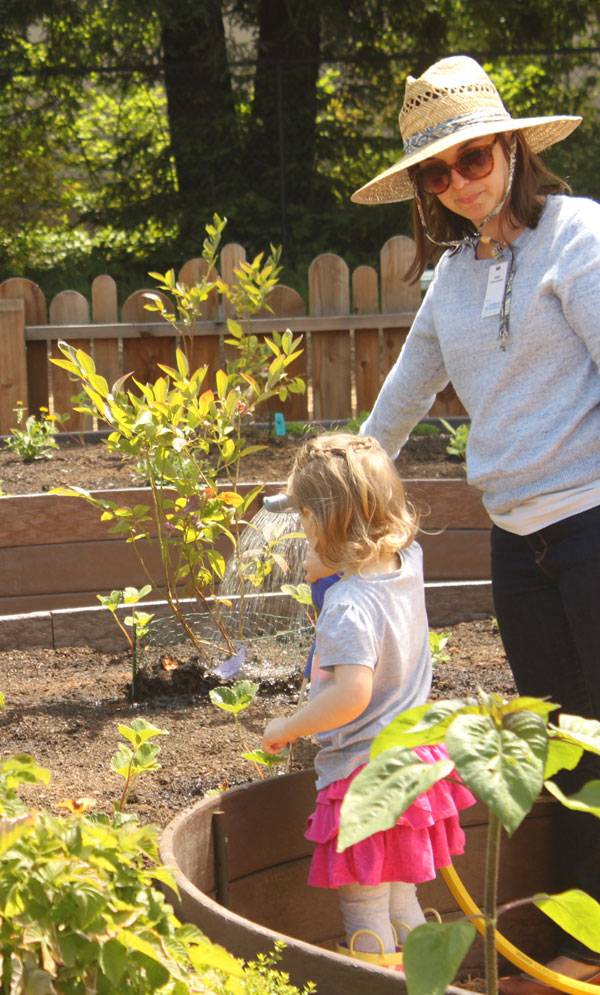
Children’s Museum of Sonoma County. Photo credit: Patricia Algara
The Concept: Kids + Nature + Creativity
This outdoor area, designed to become a children’s garden of learning and play, has been the first part of the whole museum to be developed because “It was essential to the Museum’s long-term success and mission”, says Collette Michaud, CEO of the Children’s Museum of Sonoma County. The concept of Mary’s Garden was to reunite children with nature by creating an interactive area with a tantalizing design capable of stimulating childrens’ imagination. With this thought in mind, Andreas Stavropouloud and Patricia Algara of BASE Landscape Architecture managed to design a plan capable of inspiring children’s creativity and satisfying their curiosity to discover the world; “It gives a lot of room for creativity”, they say.
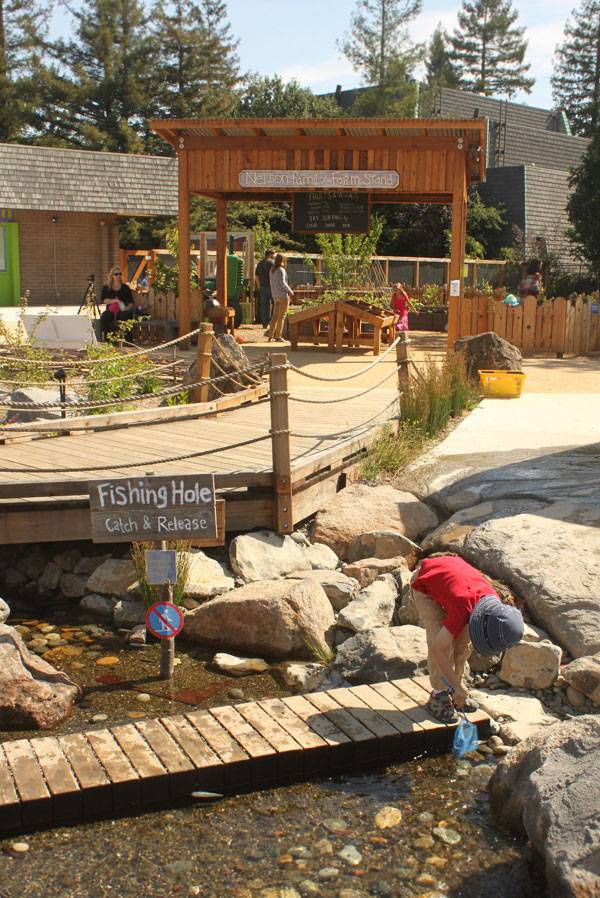
Children’s Museum of Sonoma County. Photo credit: Patricia Algara
A Place That Reflects the Surrounding Landscape
The whole design has been inspired by a transect of the environments of Sonoma County. By studying them, BASE Landscape developed a place where it is possible to pass, in a short walking distance, from inland agricultural valleys all the way to the Pacific Ocean. This became a main feature of the project because it was important to connect children with their local territory and make them aware of their surrounding landscapes.
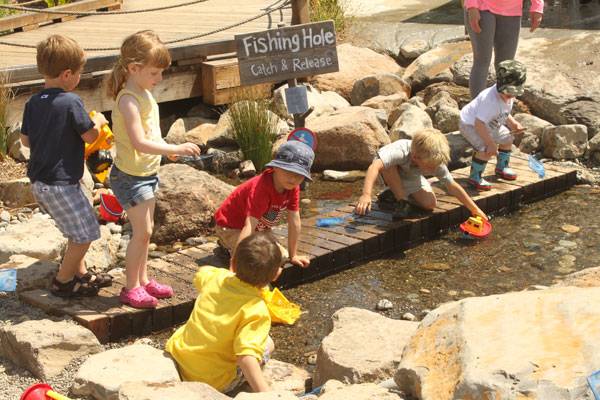
Children’s Museum of Sonoma County. Photo credit: Patricia Algara
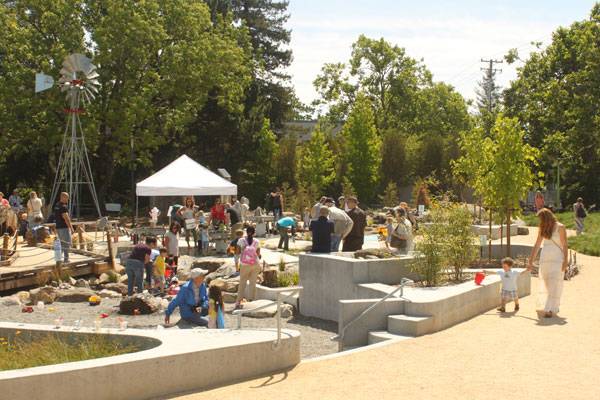
Children’s Museum of Sonoma County. Photo credit: Patricia Algara
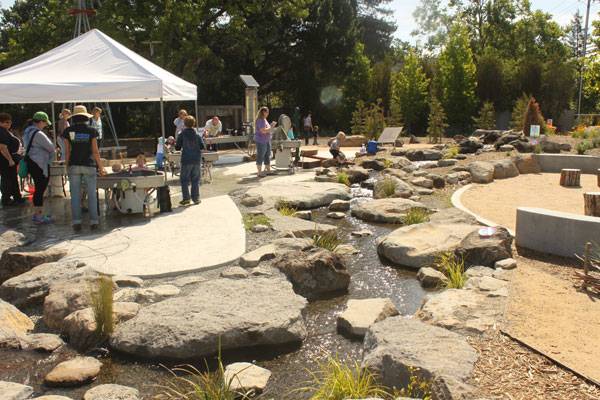
https://land8.com/exceptional-ecological-park-reconnects-children-nature/
The Educational Side of the Outdoor Museum
Mary’s Garden has several different educational aims:
- Making kids reflect upon pollinators and metamorphosis through a garden with pollinator plants
- Teaching the different ways in which water is used, thanks to an interactive water play area
- Getting kids to understand their local environment by representing its main elements
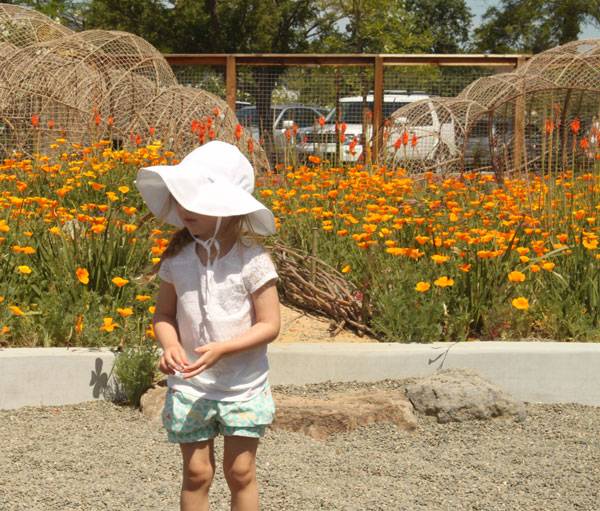
Children’s Museum of Sonoma County. Photo credit: Patricia Algara
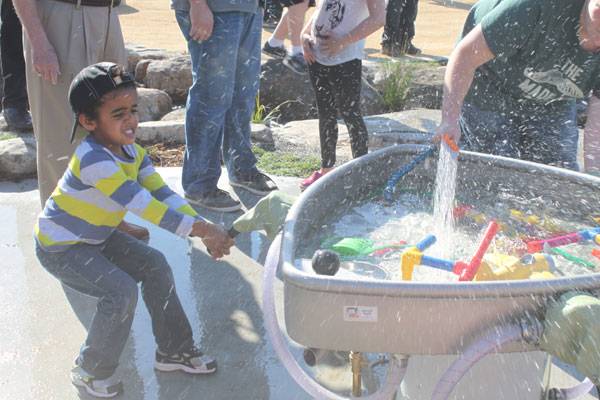
Children’s Museum of Sonoma County. Photo credit: Patricia Algara
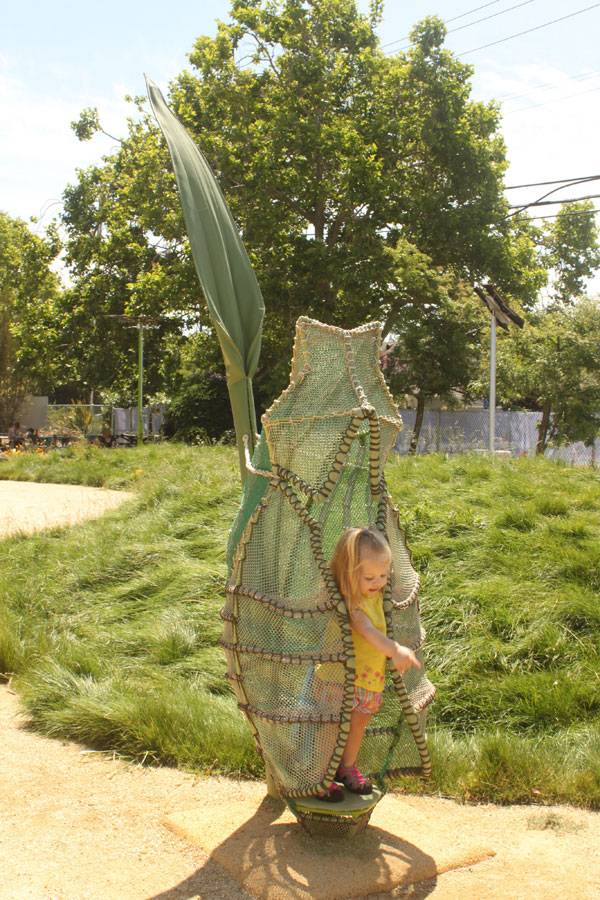
Children’s Museum of Sonoma County. Photo credit: Patricia Algara
Mary’s Garden: the Life Cycle of a Butterfly
One of the educational sides of the garden is getting kids to learn about pollinators and their importance for our planet. The title of the area, Mary’s Garden, is a tribute to those beautiful insects, as “Mary” comes from Mariposa (in Spanish; butterfly) and the moniker refers to the birth and life of a swallowtail butterfly whose name is Mary. Here kids will also understand the mysteries of metamorphosis thanks to a series of different but amazing elements representing bright eggs to climb and to hide in, and caterpillars in steel armature covered by netting and flowering vines to walk on, and also kinetic butterflies that flap their wings when kids crank the handle. Children will also discover large-scale solar and wind-powered butterflies placed throughout the garden.
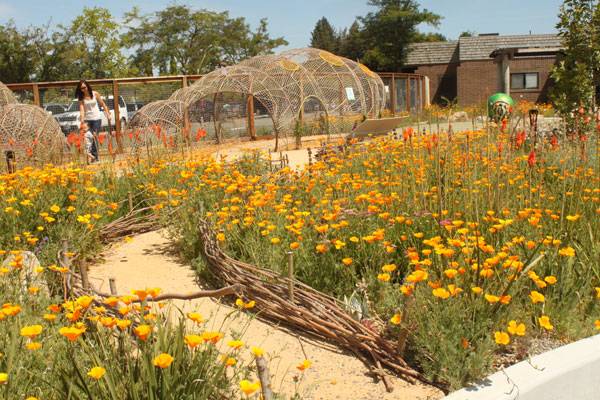
Children’s Museum of Sonoma County. Photo credit: Patricia Algara
Getting to Know About the Power of Water
Apart from its design that relates to the Russian River, the garden also develops educational aims around the issue of water. Here, in what it is called the mechanical water play area, kids can learn how human beings use water in many different ways. They learn how water gets pumped, stored, and diverted; they discover how Archimedes’ screws and dams move water through agricultural areas and generate hydropower. They also can experiment with using hand pumps.
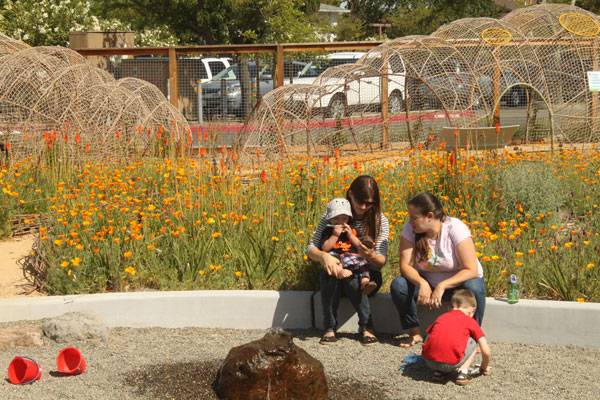
Children’s Museum of Sonoma County. Photo credit: Patricia Algara
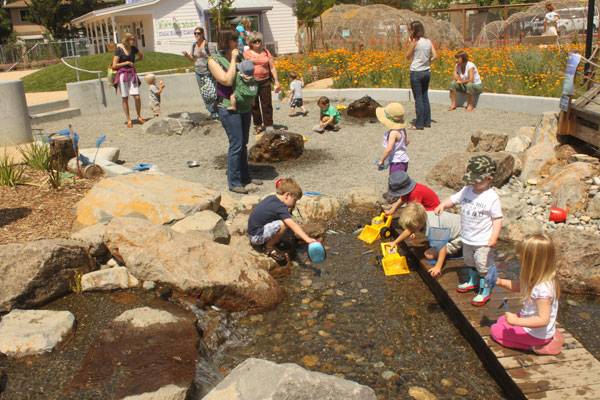
Children’s Museum of Sonoma County. Photo credit: Patricia Algara
A Naturally Filtered Waterplay Area
One of the most interesting parts of Mary’s Garden is, of course, is its water play area which represents the first naturally filtered children’s water play area in Northern California. As the designers say; “Water is first cleansed via vegetative material and a gravel filter in a living wetland, then passes through a UV filter before being recirculated.” The Sonoma County Department of Health Services Director itself approved the permit for the natural filtration system.
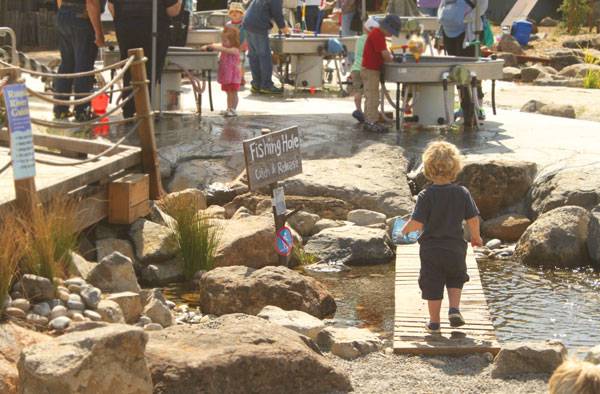
Children’s Museum of Sonoma County. Photo credit: Patricia Algara
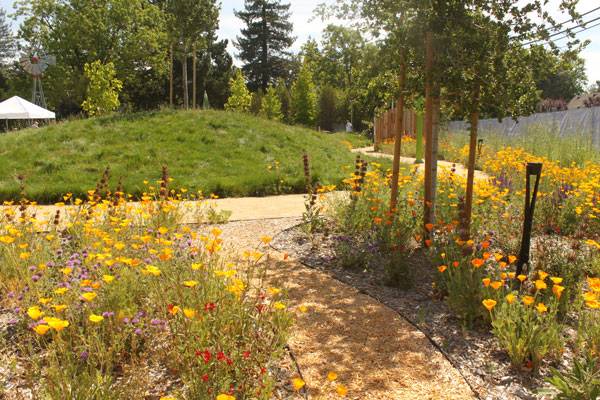
Children’s Museum of Sonoma County. Photo credit: Patricia Algara
The Importance of Child-Oriented Design
Everyone knows that nowadays most of the children aren’t aware of where our food comes from or even what some animals look like. It’s not their fault, of course, but living in a metropolis, far from the countryside, doesn’t help in keeping contact with the natural world. That is why it is so important that when it comes to designing something for children we must remember that kids represent the future, as Erin Tharp clearly states in her article Why Designing for Children is Vital to The Future of Landscape Architecture.

Featured in our article Why Designing for Children is Vital to The Future of Landscape Architecture. Uptown Normal. Photo Credit Scott Shigley – Hoerr Schaudt.
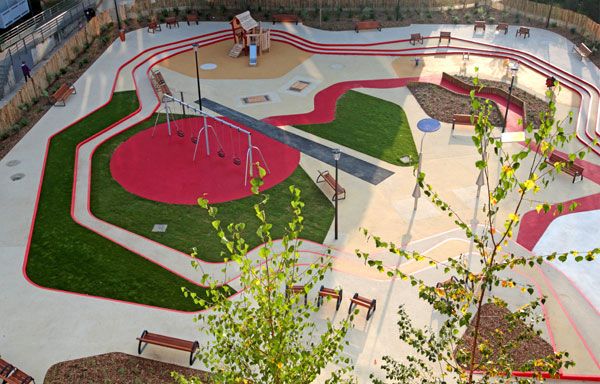
Featured in our article The 10 Best Playgrounds of the World. A Toddlers Playground. Photo courtesy of Espace Libre
Full Project Credits For Mary’s Garden, Children’s Museum of Sonoma County
Project: Mary’s Garden at the Children’s Museum of Sonoma County Location: Santa Rosa, California, USA Construction Date: 2013 Area: 1 acre Budget: $1.8M Client: Children’s Museum of Sonoma County Design Firm: BASE Landscape Architecture Consultants: Scientific Art Studios; Aquascapes Photographer: Patricia Algara Team: BASE Landscape Architecture (design firm), Scientific Art Studios (Ron Holthuysen), Aquascapes BASE Landscape Team: Andreas Stavropouloud (PLA), Patricia Algara (ASLA) Awards: Merit Award, Design Category, ASLA 2015 Awards; Special Award, Business Journal’s 10th Annual Top Projects in the North Bay Award Get Social with BASE Landscape Architecture: Website: www.baselandscape.com Facebook: www.facebook.com/baselandscape Flickr: www.flickr.com/photos/base_landscape LinkedIN: www.linkedin.com/company/base-landscape-architecture Recommended Reading:
- Becoming an Urban Planner: A Guide to Careers in Planning and Urban Design by Michael Bayer
- Sustainable Urbanism: Urban Design With Nature by Douglas Farrs
Article by Elisa A.M.Varetti Return to Homepage
Published in Blog





